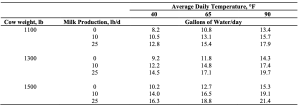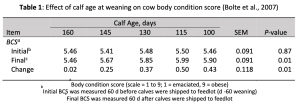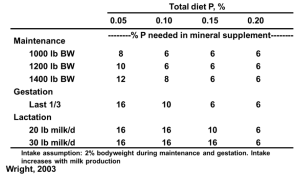By Jason M. Warner, Ph.D., Extension Cow-Calf Specialist
COWHERD MANAGEMENT
- For spring-calving cow herds:
- Monitor BCS through late summer, particularly on young females.
- Use the BCS Record Book from KSRE to record scores!
- 2–4-year-old females and thin females will respond most to early-weaning.
- If you plan to early-wean:
- Develop your plan for feeding and marketing calves.
- Prepare weaning/receiving pens and waterers in advance.
- If feeding early-weaned calves, test your forages and have your ration plan and ingredients in place 2-3 weeks prior to weaning.
- Schedule early pregnancy checking activities if not already done.
- For managing cull cows, evaluate the cost of gain relative to the value of gain for marketing decisions.
- Monitor BCS through late summer, particularly on young females.
- For late-summer and early-fall calving cowherds:
- Evaluate cows for BCS and adjust your plan to ensure mature cows are ≥ 5.0 and 2–4-year-old female are ≥ 6.0 at calving.
- The final 60 days prior to calving represents the last opportunity to add BCS economically.
- Review your calving health protocols as needed.
- Have calving equipment cleaned and available to use as needed.
- Closely manage free-choice salt and mineral programs through late summer.
- Record date and amount of salt and mineral offered and calculate herd consumption on a pasture or group basis.
- Adjust how you are offering product to cattle if needed to achieve target intake.
- If consumption is 2X the target intake, then cost will be too!
- Continue to monitor bulls and their activity throughout the breeding season.
- Monitor BCS, particularly on young bulls.
- If bulls are BCS ≤ 5.0 after breeding, consider supplementing to regain BCS going into fall.
- Schedule breeding soundness exams for bulls used for fall service.
CALF MANAGEMENT
- If creep feeding calves, closely monitor intake and calf condition/fleshiness.
- Monitor calves for summer respiratory illness.
- Schedule any pre-weaning vaccination or processing activities.
GENERAL MANAGEMENT
- Evaluate grass growth and adjust your grazing plan as needed.
- Employ multiple strategies, chemistries for late-season fly/insect control.
- Begin taking inventory of harvested forages for fall feed needs.
- Use the forage inventory calculator (https://www.agmanager.info/hay-inventory-calculator).
- If planning to harvest corn silage, prepare your pile/bunker site and equipment.
- If using a custom harvester, communicate with them well in advance.
- Closely monitor whole plant moisture levels.
- Have silage tarps in place and ready to cover once harvest is complete.
- Use the Management Minder tool on KSUBeef.org to plan key management activities for your cowherd for the rest of the year.
- With high feeder calf prices, consider price risk management tools.
- Visit with your local FSA and extension office if you plan to utilize CRP acres for emergency forage use or for information on other assistance programs.


